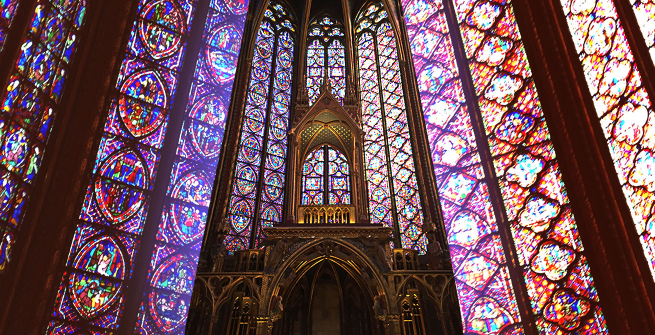What comes to mind when the phrase “Middle Ages” comes up? You probably think of stories of knights in armor jousting. Or sitting through a history class where someone tried to teach you about the feudal system. Or some horrific forms of medical treatment or criminal punishment. Or maybe you just think it’s kind of like Game of Thrones. And don’t forget the plague. Lots and lots of plague.
Thanks to a recent boomlet in interest in the Middle Ages (especially in Europe), historians have been trying to spread the word that the European Middle Ages were not as weird and backward as we were taught. Instead, the Middle Ages was a time when cultures from across the planet began to mix together. A world that was dominated by the Roman Empire was now split up among peoples from the farther reaches of Europe. One of the world’s major religions, Islam, began and helped to spread Arab culture throughout the continent.
Toward the end of the Middle Ages, Europeans would come into contact with people from the Far East as the Mongols created the largest contiguous land empire in the world’s history.
Two new books have tried to dispel our frequently mis-held ideas about the Middle Ages.
One is Dan Jones Powers and Thrones: A New History of the Middle Ages a sprawling comprehensive survey of Medieval Europe by a historian who writes for a popular audience.
Jones over 636 pages takes the reader on a trip from the Sack of Rome by the Goths in 410 to another Sack of Rome in 1527 by mutinous troops from the Holy Roman Empire and Spain, although there are numerous other events that could mark the end of the Middle Ages (development of the printing press, leaving Europe to go wreak havoc on the Americas, and the Protestant Reformation are some examples).
It’s an entertaining read, showing off the enormous accomplishments of the Middle Ages, from scientific advances, with most of them coming from the Middle East as the new religion of Islam picked up the foundations of science laid down by the Ancient Greeks, that were mostly lost to the Latin-speaking Christians of Europe. Universities were established for the first time, and education began to be for more than just those who wanted to join the clergy.
There were still some very horrific events of the Middle Ages (there are horrific events now, too, this is not a competition), such as wide-scale religious violence in the form of the numerous Crusades. And plague would wipe out large portions of the population at various times. That plague is still around in the world, but it is usually treatable with modern antibiotics.
Two academic historians, Matthew Gabriele of Virginia Tech and David M. Perry of the University of Minnesota, tried to write a book that would straddle both the popular and academic worlds. It is The Bright Ages: A New History of Medieval Europe. The book is much shorter than Jones and is not as much a survey as it is a series of examples to show how the Middle Ages were not as bad. Both men also try to refute the idea that the ideas of the Middle Ages should be reflected in white supremacists of today.
And if even that much is too much for you, the Getty Center has an assistant curator making reels on Instagram debunking myths about the Middle Ages.
Despite all this work, the Middle Ages will still remain a part of history that a lot of us will never fully grasp or fall in love with. But one day, Beyonce will come out with an album, and it won’t be called “Renaissance,” but rather be titled “Medieval,” and then just remember it was the library telling you that the Middle Ages were really popular and cutting edge.
Recommended Reading



This 2004 bestseller set off a popular reconsideration of the Mongol leader, a reconsideration that even got people to start spelling his name as Chinggis Khan.

This 2021 book mostly looks at the European quarter of the Mongol Empire.



Al-Khalili, a physicist and writer of popular science works, produced a series on the BBC on this topic, which is hard to find in the U.S. However, this 2011 book contains most of the information about how Arabs, because of their knowledge of Greek along with their access to scholars from India, were able to keep the process of science going through a turbulent period in world history.

Janega, a Medieval scholar with a fairly big online following, created a graphic history of the Middle Ages with illustrator Neil Max Emmanuel. It’s yet another avenue for medievalists trying to reach out to the wider world.
